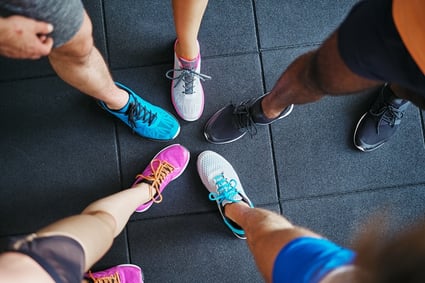 If you’ve ever had a bad run because your shoes were killing your feet, you’re not alone. When you're training for something as big as the Indy Mini, the last thing you want is to be sidelined by blisters, shin splints, or worse—injuries that could have been prevented by the right pair of shoes. That’s where a visit to Athletic Annex can change the game.
If you’ve ever had a bad run because your shoes were killing your feet, you’re not alone. When you're training for something as big as the Indy Mini, the last thing you want is to be sidelined by blisters, shin splints, or worse—injuries that could have been prevented by the right pair of shoes. That’s where a visit to Athletic Annex can change the game.
I know what you’re thinking: "It’s just shoes." But trust me, having the right shoes makes a world of difference. It’s not just about looking cool (although that’s a nice bonus). It’s about support, comfort, and making sure your body can handle the mileage you’re about to take on. Athletic Annex uses 3D foot scanning technology to customize the whole experience—and it’s actually pretty awesome.
What’s This 3D Foot Scan All About?
You step onto this device that takes a full 3D image of your feet. It measures your arch height, foot length, and even pinpoints where you put the most pressure when you walk or run. It’s like finding out your feet’s life story! Once they have all that info, their staff (who actually know what they’re talking about) matches you with shoes designed to fit your unique foot shape and needs.
Why Bother with a Custom Fit?
A lot of us just buy shoes based on size and whatever’s on sale. But here's the deal:
- Comfort is king – The right fit keeps you comfortable during those long training runs. No weird rubbing, no pinching, no “my feet feel dead” moments.
- Injury prevention – Shoes that don't fit right can cause all sorts of problems—blisters, plantar fasciitis, and other annoying injuries that’ll mess with your training plan.
- Improved performance – When your shoes fit perfectly, your form is better, and your stride feels more natural. You’ll be surprised at how much easier running feels with the right gear.
How Athletic Annex Can Help Your Training.
Whether you’re a first-timer in the Indy Mini program or a seasoned runner, Athletic Annex can help take the guesswork out of finding the right shoes. With their 3D scanning system, you’ll know that you’re getting a shoe that supports your foot in all the right places. No more hoping you "break them in." These shoes will feel like they were made for you from day one.
As someone who's been around runners for a while, I've seen what a good pair of shoes can do for confidence and performance. When you’re not worried about your feet, you can focus on hitting your next goal, whether that’s a faster pace or just surviving that long run!
So, if you’re serious about your Indy Mini training (or just tired of foot pain), head over to Athletic Annex. Your feet will thank you.

 Believe it or not, shoes do serve a higher purpose than just to make a fashion statement—especially when you’re
Believe it or not, shoes do serve a higher purpose than just to make a fashion statement—especially when you’re 